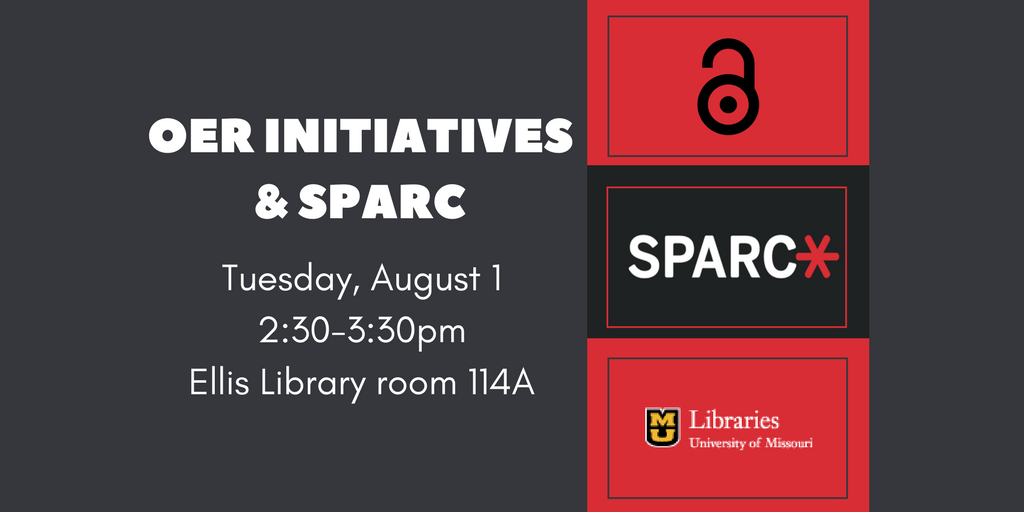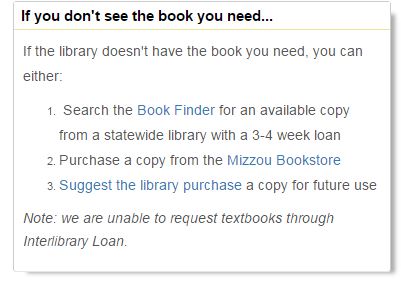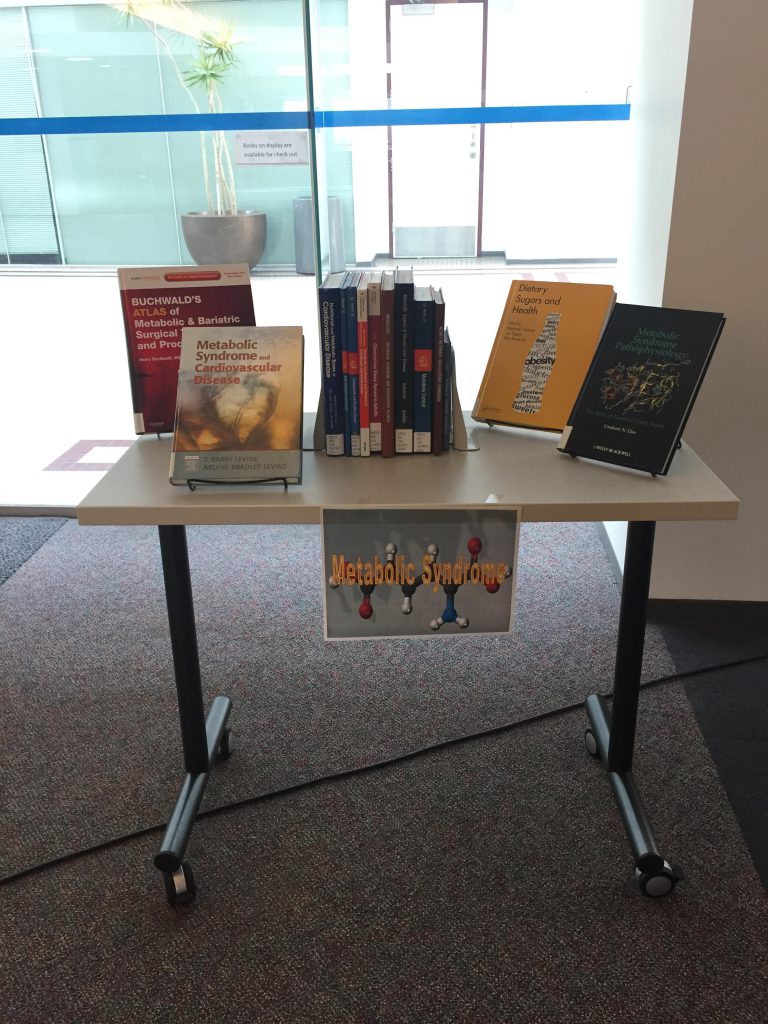OER Initiatives & SPARC
Presentation in Ellis Library
Tuesday, August 1
2:30-3:30pm
Ellis Library – 114A
Please RSVP on Eventbrite
Interested in learning about ways to support and implement Open Educational Resources (OER)?
As the University of Missouri moves forward with its own system-wide OER initiative, it’s useful to learn about how faculty at other universities have made progress in Open Education initiatives. Katie Steen, SPARC Open Education Fellow and Mizzou graduate, is coming to campus to explain how the Scholarly Publishing and Academic Resources Coalition (SPARC) supports the creation and adoption of OER. Ms. Steen will share what SPARC has learned in working with other colleges and universities on OER: what methods for implementing OER have created the most impact in affordability and equitable learning, and strategies for how we can increase OER use and impact at our own university.
Open to all faculty, students, staff, across campus—anyone interested in creating, using, or supporting OER is encouraged to attend!
Presentation will be 30 minutes with up to 30 additional minutes for Q&A.
Click here to RSVP on Eventbrite.
+++
Open Education is the critical link between teaching, learning, and the collaborative culture of the Internet. SPARC supports policies and practices that advance the creation and use of Open Educational Resources (OER) — academic materials that everyone can use, adapt, and share freely.
The Scholarly Publishing and Academic Resources Coalition (SPARC) is a global coalition committed to making Open the default for research and education. SPARC empowers people to solve big problems and make new discoveries through the adoption of policies and practices that advance Open Access, Open Data, and Open Education.











